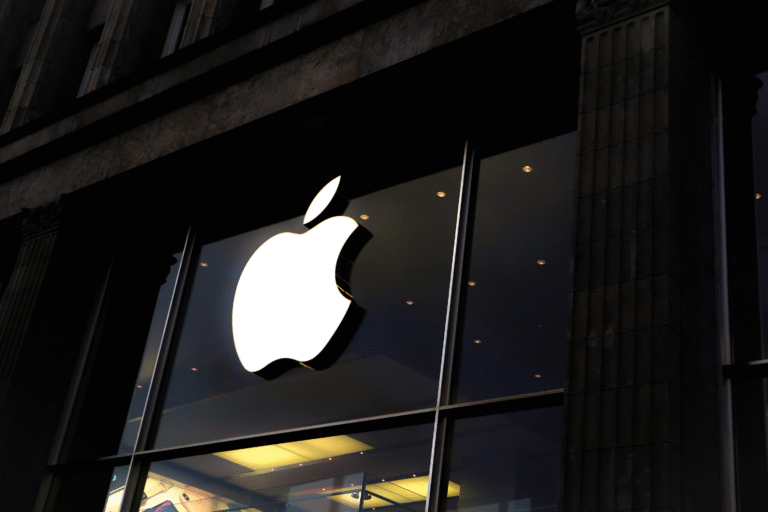The excitement around Artificial Intelligence (AI) has filled boardrooms, stock markets, and investor meetings across the United States. But while this technological revolution continues to sparkle with promise, the financial results of many U.S. companies in the third quarter of 2025 are expected to show a slower pace of growth. Analysts believe profits will still rise—but not as strongly as they did earlier in the year.
In simple terms, companies are earning more money than last year, but not as much more as before. This slowdown in profit growth comes at a time when businesses are also dealing with new challenges, including tariffs introduced under President Donald Trump’s trade policies. While these tariffs were designed to protect American industries, they may have quietly increased costs for many companies that depend on imported goods or materials.
Accordingto the latest forecast from LSEG, the earnings of companies in the S&P 500 index are expected to grow by 8.8% compared to the same quarter in 2024. That may sound good, but it is less than the 13% growth seen during the first two quarters of 2025. Sales, on the other hand, are expected to rise by about 5.7%. These numbers suggest that while the economy is still strong, it might be starting to cool down a little.
At the heart of this story lies the booming interest in AI. Artificial Intelligence has become more than just a buzzword—it’s now a major part of business strategy. Many companies have been pouring billions of dollars into AI research, software, and infrastructure. Investors are watching closely to see whether this massive spending is truly paying off. The big question on everyone’s mind is: Can AI really deliver the profits and productivity that companies are hoping for?
The fascination with AI has also helped lift the U.S. stock market to record levels this year. The S&P 500 and Nasdaq recently closed at all-time highs, driven mainly by large technology companies that are deeply involved in AI development. These so-called “megacap” firms—like those leading in chips, cloud computing, and data analytics—have become the stars of Wall Street. Their performance has set the tone for the entire market.
Still, beneath the surface, not everything is as bright. Some experts warn that relying too heavily on AI-related optimism could make markets fragile. If the expected profits from AI take longer to appear, or if the technology doesn’t scale as quickly as planned, investor confidence could weaken. “AI is shaping the future, but it’s also testing the patience of investors,” said one market analyst. “Companies are spending heavily now, and they’ll need to prove that this spending translates into real earnings growth.”
For most businesses outside the tech world, AI is still in its early stages. While banks, retailers, and healthcare firms are experimenting with automation and data tools, not all of them are seeing immediate benefits. Some companies are even struggling to find the right balance between investing in innovation and maintaining profitability. As one executive recently put it, “You can’t stop investing in the future, but you also can’t afford to lose sight of today’s costs.”
The third quarter of 2025 is therefore being watched closely—not just for what the earnings numbers show, but for what they reveal about corporate priorities. Investors are less interested in short-term tariff worries or political headlines. Instead, they want to know how deeply companies are committing to AI and whether this new wave of spending will produce long-term rewards.
The “unofficial” start of the earnings season begins next week, with some of the largest U.S. banks set to report their results. Financial companies often set the tone for how the rest of the market performs, since their results give hints about borrowing trends, consumer confidence, and overall business activity. Many analysts will be looking beyond the profit figures themselves, focusing instead on what company executives say about future investment plans—especially in AI and digital transformation.
AI spending is already showing up in corporate budgets across nearly every industry. For example, energy firms are using AI to improve efficiency in drilling and production, carmakers are depending on AI for self-driving technology, and healthcare companies are exploring AI tools to speed up research and diagnosis. This rapid adoption has created excitement but also pressure—shareholders expect returns on these massive investments sooner rather than later.
The enthusiasm for AI has also influenced hiring trends. Many companies are searching for AI engineers, data scientists, and cybersecurity specialists. However, these skilled professionals are in short supply, driving up costs and making it difficult for smaller firms to compete with big tech players. Some businesses have started forming partnerships with AI startups to stay in the race without spending too much on in-house development.
Even though the road ahead may be uncertain, optimism remains strong. Wall Street has always been driven by stories of growth and innovation, and AI fits that narrative perfectly. It’s seen as a technology that could redefine how industries operate, from manufacturing to marketing. But like any major transformation, the results will take time.
“Artificial intelligence is not just a passing trend—it’s a long-term shift,” another analyst explained. “Companies that plan well and invest wisely could gain a huge advantage. But those that jump in without strategy might find it costly.”
For now, investors appear willing to be patient. The record highs of the stock market suggest that confidence remains strong. Yet the slower profit growth numbers hint that U.S. companies are navigating a delicate balance between managing short-term challenges and preparing for a high-tech future.
As the next few weeks of earnings reports unfold, the spotlight will remain firmly on how companies talk about AI—how much they’re spending, what progress they’ve made, and when that progress might start showing up in profits. The excitement of innovation is undeniable, but so are the risks that come with it.








